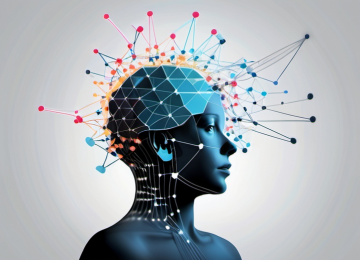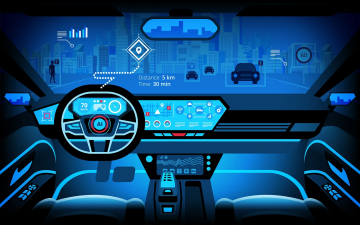KAIST
BREAKTHROUGHS
Research Webzine of the KAIST College of Engineering since 2014
Spring 2025 Vol. 24Can AI Design Mobility Systems?
Professor Namwoo Kang and his Smart Design Lab have developed an AI-powered generative design process for mobility systems by integrating physics-based engineering design techniques with data-driven deep learning models.
Article | Spring 2022
Vehicle design has been pursing physics-based design using the domain knowledge accumulated by automobile manufacturers. Recently, data-driven designs are emerging, and digital transformation (DX) technologies using data are changing the design paradigm. However, due to the nature of the automobile industry, it is difficult to change the paradigm as quickly as it is for IT companies.
The field of vehicle design has also been pursuing performance-based design because engineering performance, with its objective metrics, is easy to quantify and achieve. On the other hand, human-centered design is difficult to conduct because design criteria are emotional, user-based, and market-driven, things that are difficult to measure. Nevertheless, the success of future mobility design will depend not only on performance, but also on user satisfaction and understanding of market needs.
What if AI could design vehicles? What if AI could conduct mobility design that integrates both physics-based and data-driven approaches and satisfies both engineering performance and user needs?
In the past, designers have made decisions based on experience, but recent AI technology is showing that more efficient decision-making is possible based on data. A digital transformation would also enable AI to design products and evaluate their performance in a virtual digital space, dramatically reducing product development time and costs.
Professor Namwoo Kang from the CCS Graduate School of Green Transportation and his Smart Design Lab propose an AI-powered generative design process that integrates physics-based engineering design techniques (e.g., design optimization, CAD/CAM/CAE, HCI, etc.) and data-driven deep learning models. This process allows AI to generate designs that meet the specifications of engineering performance, aesthetics, and economics at the same time.
The proposed process consists of three stages: (1) design generation, (2) design evaluation, and (3) design recommendation. Design generation is the stage of generating numerous new CAD models based on past design data. Design evaluation is the stage of predicting various engineering performance and manufacturing costs using the generated CAD models. Design recommendation is the stage of predicting customer preferences and recommending a marketable design.
Most Popular

When and why do graph neural networks become powerful?
Read more
Smart Warnings: LLM-enabled personalized driver assistance
Read more
Extending the lifespan of next-generation lithium metal batteries with water
Read more
Professor Ki-Uk Kyung’s research team develops soft shape-morphing actuator capable of rapid 3D transformations
Read more
Oxynizer: Non-electric oxygen generator for developing countries
Read more
![[Figure 1. AI-based Generative Design]](http://breakthroughs.kaist.ac.kr/wp/wp-content/uploads/2022/02/17.jpg)
![[Figure 2. Example of Wheel Design Generation by Integrating Physics and Data]](http://breakthroughs.kaist.ac.kr/wp/wp-content/uploads/2022/02/26.jpg)